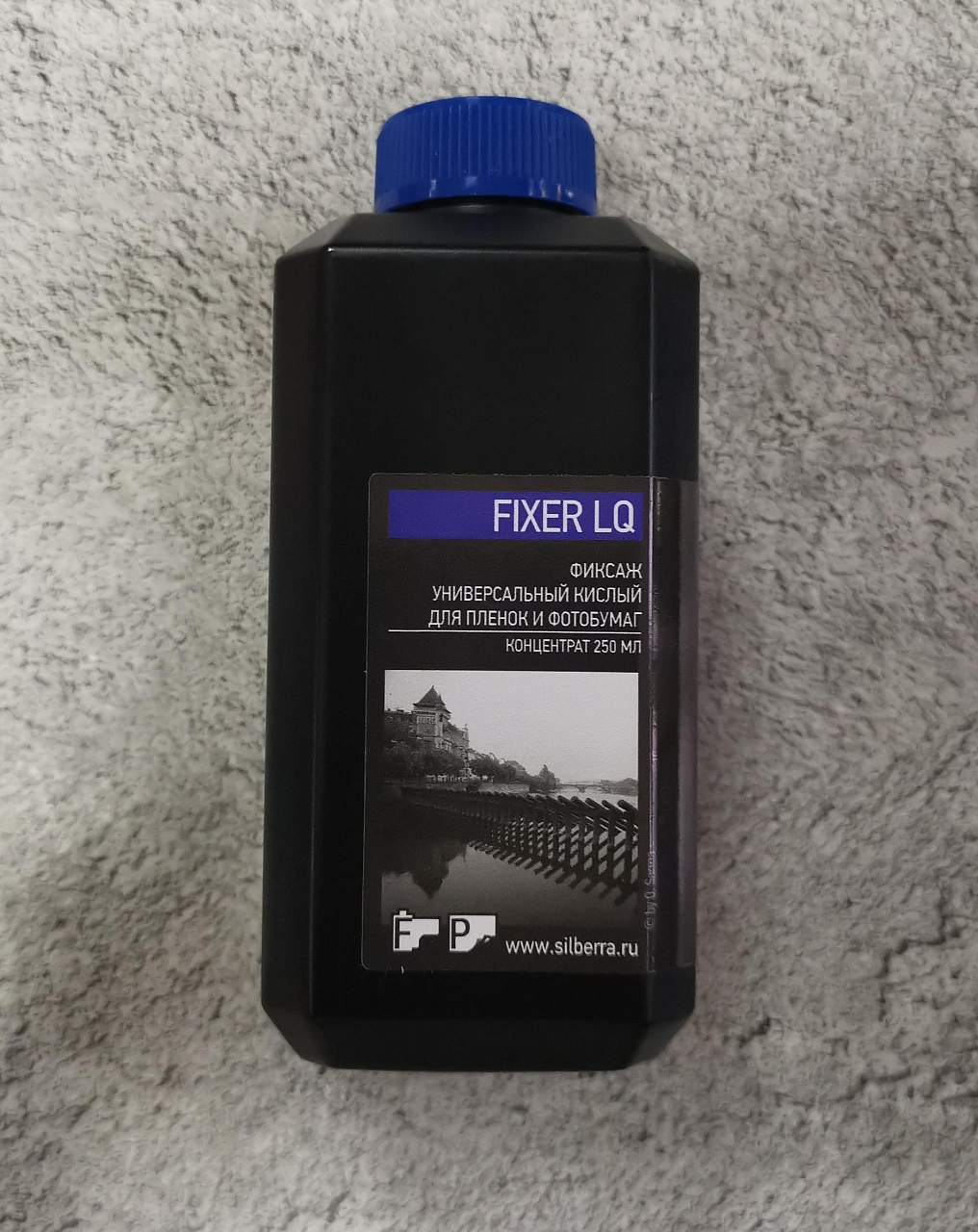polaroids@bk.ru
see the section "Contacts"
11-20 weekdays 11-20 weekends
Fixer LQ Silberra, 250 ml
Photochemistry for self-developing and printing photos.
Fast acid fixative based on ammonium nitrate is also one of the most common recipes for fast fixatives. Having all the properties of acid fixation, this concentrate is designed for a slightly larger volume of processed material. At the same time, in order to preserve a large fixation resource, it is recommended to use either an intermediate stop bath or a thorough washing between the manifestation and fixation of the material.
Out of stock
Properties
-
Composition:
Sodium thiosulfate, sodium metabisulfite, sodium sulfite, ammonium nitrate.
Method of preparation of the working solution
The working solution is prepared by introducing the concentrate into water with moderately active stirring (use only glass sticks or other inert materials to stir the reagents in water!). It is recommended to use only distilled water to prepare the developer's working solution. The recommended dilution of the concentrate is 1+4. On the basis of this concentrate, an ultrafast fixer can also be prepared using a dilution of 1+2.
Fixing Time
The working solution of the Silberra FIXER LQ fixer with moderate agitation completes the fixing of images on photographic film in 3-5 minutes, on barite-based photo paper in 5-6 minutes, on RC photo paper in 1.5-2 minutes. In the case of using the ultrafast option, the time for fixing images is reduced: for photographic films - 1-2 minutes, for barite photo papers - 2-3 minutes, for RC-based papers - 1-1.5 minutes.
The optimal fixing time for any particular film should be selected based on the three-fold lightening time. The lightening time is the time during which the washed (soaked in water for several minutes) negative photographic material immersed in the fixer becomes completely transparent – the milky-cloudy color disappears, the substrate becomes transparent. To determine the lightening time, a charging tongue of the film is usually used, which is cut off from the cassette and, using tweezers, is half immersed in the working solution of the fixer. Noting the lightening time by the timer, it is multiplied by 3 and the time of fixing to this film is obtained.
For photo papers, such tests are usually not carried out, relying on the nominal fixing time indicated on the fixation.
Usage Limit
The working solution of the Silberra FIXER LQ fixer, with moderate agitation, is able to fix up to 25 films of the 135 mm type, or up to 40-45 sheets of 18x24 cm format (or approximately 2 sq.m. of photo paper). As the fixation is depleted, it is necessary to increase the processing time of the material in solution, or increase the temperature of the solution. For every third film processed in one working solution, the increase in the fixation time will be approximately 10%.
Side Effects
It is not recommended to fix both photo paper and film in the same volume of the fixer. During storage in the concentrate, a flake-like precipitate may fall out; this does not affect the working properties of the concentrate, but if such a precipitate is detected, it is recommended to filter the concentrate. The appearance of an ammonia smell indicates the depletion of the fixer and such a solution must be disposed of.
Storage Rules
In a dry, dark, cool place; keep away from children. Solutions should be stored in tightly sealed high-quality dishes, without air access and with a minimum amount of residual air above the solution.
Shelf Life
In the form of concentrate in the original closed bottle: 12 months. In the form of a working solution, the Silberra FIXER LQ is stored in a closed bottle for no more than 3 months from the moment of preparation; partially used solution - no longer than 4 weeks.
Disposal Rules
Silberra developers and fixers are subject to disposal in accordance with the rules and regulations adopted in the country of application. Developer concentrates in liquid form are toxic (unless otherwise specified) and may harm the environment if improperly disposed of. Silberra recommends that spent developers and fixers be handed over to organizations engaged in the processing of chemical waste and having the appropriate licenses for the disposal and processing of photoreactive materials.
Featured Products

 +7 (977) 980 -58-18
+7 (977) 980 -58-18 
